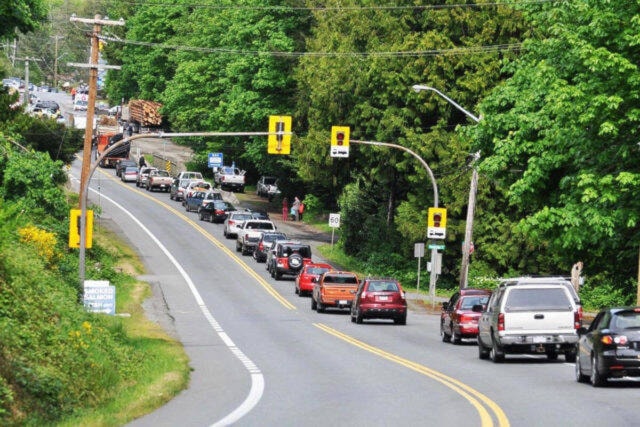Greenhouse gas emissions are dropping in Sooke, but not quickly enough as the district struggles to meet its climate targets.
Overall GHG emissions dropped 2.6 per cent from 2018 to 2020, mainly due to the COVID-19 pandemic cutting down on the number of cars on the road, said Glenn Harris, senior manager of Environmental Protection with the Capital Regional District.
But according to Sooke council’s emission reductions targets, that’s below the mark they need to hit. Last April, the district council committed to a 50 per cent cut from 2018 GHG emissions levels by 2030, or just over 5.5 per cent per year from that point.
Council recently approved a new climate plan that targeted a 50 per cent reduction by 2030 for corporate emissions from 2020 levels. By 2050 the goal is for emissions to hit net-zero.
The most significant contributor to Sooke’s GHG emissions is vehicle traffic. More than 50 per cent of emissions between 2007 and 2018 came from on-road transportation. That trend played out throughout Greater Victoria, with the CRD emitting 1.8 million tonnes of CO2 in 2020, representing a 9.8-per-cent reduction from 2007 levels and a five-per-cent drop from 2018. The pandemic also fueled that but still meant the CRD came far short of its goal to lower emissions by 33 per cent below 2007 levels by 2020.
ALSO READ: Road vehicles drove Capital Region’s 2020 greenhouse gas emissions, despite COVID-19 impacts
In addition, Sooke’s growing population has seen building energy consumption increase dramatically, with natural gas consumption increasing 200 per cent, Harris said.
Alan Dolan, a member of the steering committee for Transition Sooke, a local climate advocacy group, said the news was a “major cause for concern.”
“Over the past year and a half, Transition Sooke analysis has shown that while the district plans to stop using fossil fuels to run our cars and heat our homes are an excellent first step, we cannot meet our climate targets without slowing our growth. The only construction that should be continuing is non-market, affordable housing.”
While overall emissions have increased, per capita emissions have gone down. Sooke residents used five tonnes of CO2 emitted in 2007, but that dropped to 3.7 tonnes of CO2 in 2020.
Harris said Sooke continues to see strong electric vehicle registration every year.
District of Sooke spokesperson Christina Moog said in an email that a lot of the 7 per cent reduction target was reliant on people getting access to heat pumps and electric vehicles, which has caused some delays in meeting emission reduction targets. But Moog said the district is still on track to set up significant emission reductions.
“2022 is a year that is focusing primarily on the wayfinding and education for residents. As we pick up speed in these areas, we will start to see exponential reductions in emissions year after year.”
ALSO READ: Sooke council approves climate change plan
bailey.moreton@goldstreamgazette.com
Like us on Facebook and follow us on Twitter.
